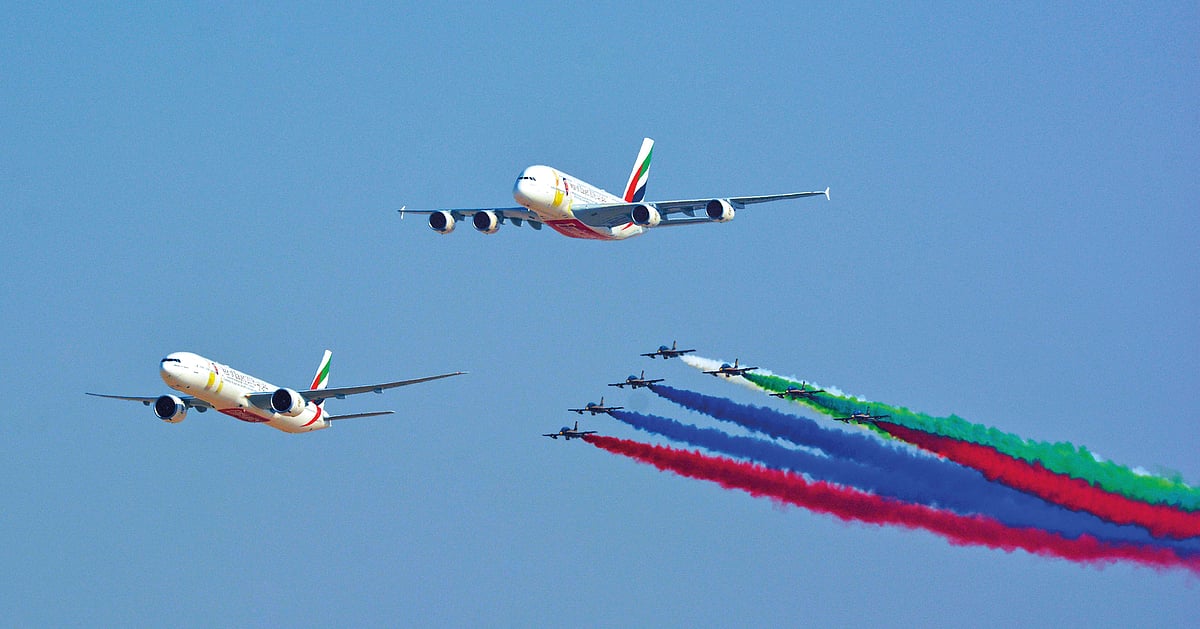Supply chain strain shapes strategy
Airbus and Boeing’s delivery delays are looming large in executives’ minds. Airlines are split between wanting early delivery assurances and seeking flexibility on aircraft variants as production ramps up slowly.
“Everyone wants to be near the front of the queue,” said Ziemelis. “But lead times mean many will ask for options on the final variant they receive.”
During a media briefing on Friday, Gabriel Semelas, President of Airbus for Africa and the Middle East, acknowledged that production remains under pressure.
“We have a backlog of around 8,500 aircraft,” he said. “We’re ramping up the A350 to rate 12 by 2028 and the A330 to rate five by 2029. The supply chain is improving, but it will take time.”
Semelas added that Middle Eastern demand remains disproportionally high for widebodies—about 42 per cent of future orders—compared with a global average of 20 er cent. That’s driven by the region’s role as an intercontinental transit hub and the recovery of routes such as Dubai–Riyadh and Jeddah–Cairo, among the busiest in the world.
flydubai and Emirates still hold the cards
flydubai and Emirates are expected to dominate orders again this year. Bloomberg reports also suggested that flydubai is reportedly weighing a blockbuster order of up to 200 narrowbody jets, with options for 100 more. Sources say Boeing remains the frontrunner, though Airbus has been aggressively courting the airline — a partner it has never previously won.
The airline CEO Ghaith Al Ghaith told Bloomberg that the carrier is “continuously assessing fleet requirements” and remains “in discussions with all major partners.”
If finalised, such a deal would reinforce the Middle East’s growing interest in narrowbody jets, including models like the Airbus A321XLR and the Boeing 737 MAX. These aircraft are well-suited for shorter, high-demand routes or “thin” long-haul markets linking Gulf hubs to new tourist destinations across Africa and South Asia.
Tight money, smarter financing
High interest rates are also reshaping how airlines fund aircraft. Rather than taking on long-term capital expenditure, more are turning to flexible leasing or so-called ACMI (Aircraft, Crew, Maintenance, Insurance) arrangements.
“Cash is king,” said Ziemelis. “When airlines use ACMI for a maximum of six months a year and around 10 per cent of their fleet, profitability can rise by 2 to 3 per cent. It’s an operational expense, not a long-term debt.”
Ahmad added that while major players like Emirates and Qatar Airways have access to robust financing tools — including Japanese Operating Leases (JOLCOs) — smaller Gulf carriers are relying more on lessors who can offer adaptable terms during market uncertainty.
Regional growth keeps momentum
Despite geopolitical shocks, Middle Eastern aviation continues to expand at pace. Ziemelis pointed to forecasts from Tourism Economics projecting regional tourism spending to surge 50% by 2030, reaching nearly $350 billion annually.
“Total passenger numbers in the Middle East are forecast to hit 466 million in 2025, up nearly 6% year on year,” he added. “Airlines will need added capacity — leased or owned — to keep up.”
Industry veteran John Grant of OAG echoed that sentiment, though with caution. “There’s plenty of ambition, but also realism,” he said. “Fleet juggling and patience will define this Airshow more than record-breaking deals.”
Last-minute showstoppers?
Still, few would completely rule out surprises. As Semelas put it, “Ahead of any airshow, there’s always speculation. Conversations with our customers remain confidential, so the best advice is: wait until Monday — you’ll hear everything.”

